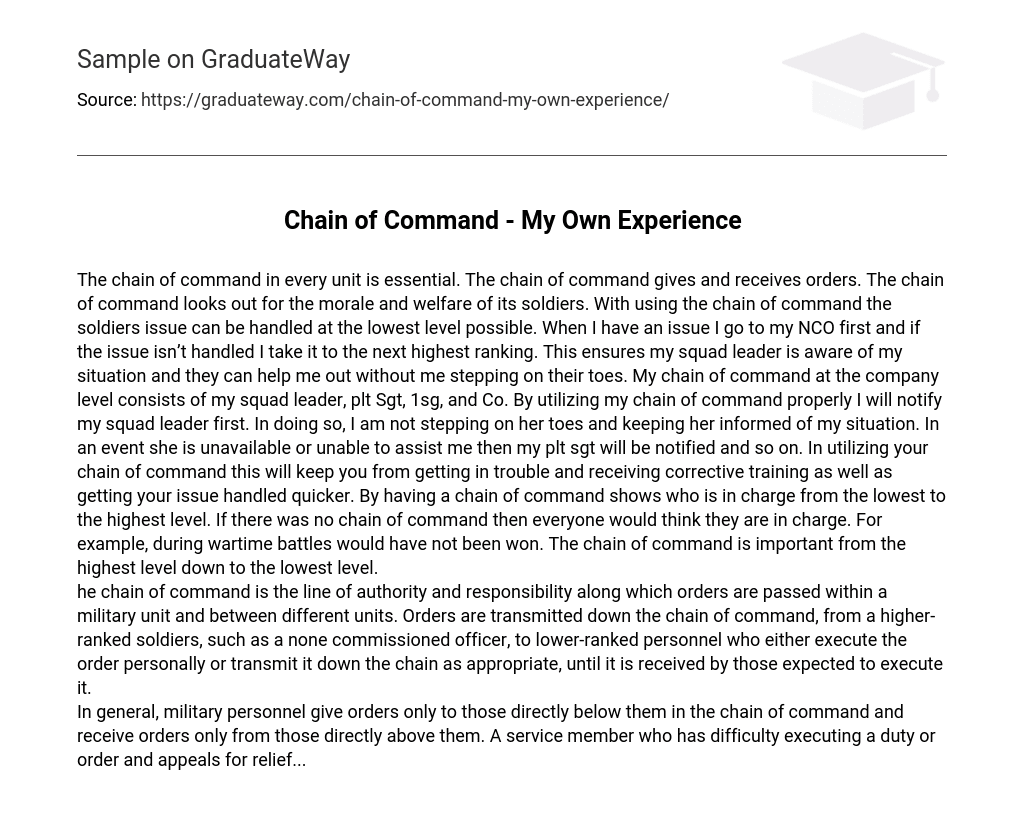The chain of command in every unit is essential. The chain of command gives and receives orders.
The chain of command looks out for the morale and welfare of its soldiers. With using the chain of command the soldiers issue can be handled at the lowest level possible. When I have an issue I go to my NCO first and if the issue isn’t handled I take it to the next highest ranking. This ensures my squad leader is aware of my situation and they can help me out without me stepping on their toes.
My chain of command at the company level consists of my squad leader, plt Sgt, 1sg, and Co. By utilizing my chain of command properly I will notify my squad leader first. In doing so, I am not stepping on her toes and keeping her informed of my situation. In an event she is unavailable or unable to assist me then my plt sgt will be notified and so on. In utilizing your chain of command this will keep you from getting in trouble and receiving corrective training as well as getting your issue handled quicker. By having a chain of command shows who is in charge from the lowest to the highest level.
If there was no chain of command then everyone would think they are in charge. For example, during wartime battles would have not been won. The chain of command is important from the highest level down to the lowest level. he chain of command is the line of authority and responsibility along which orders are passed within a military unit and between different units. Orders are transmitted down the chain of command, from a higher-ranked soldiers, such as a none commissioned officer, to lower-ranked personnel who either execute the order personally or transmit it down the chain as appropriate, until it is received by those expected to execute it. In general, military personnel give orders only to those directly below them in the chain of command and receive orders only from those directly above them.
A service member who has difficulty executing a duty or order and appeals for relief…





